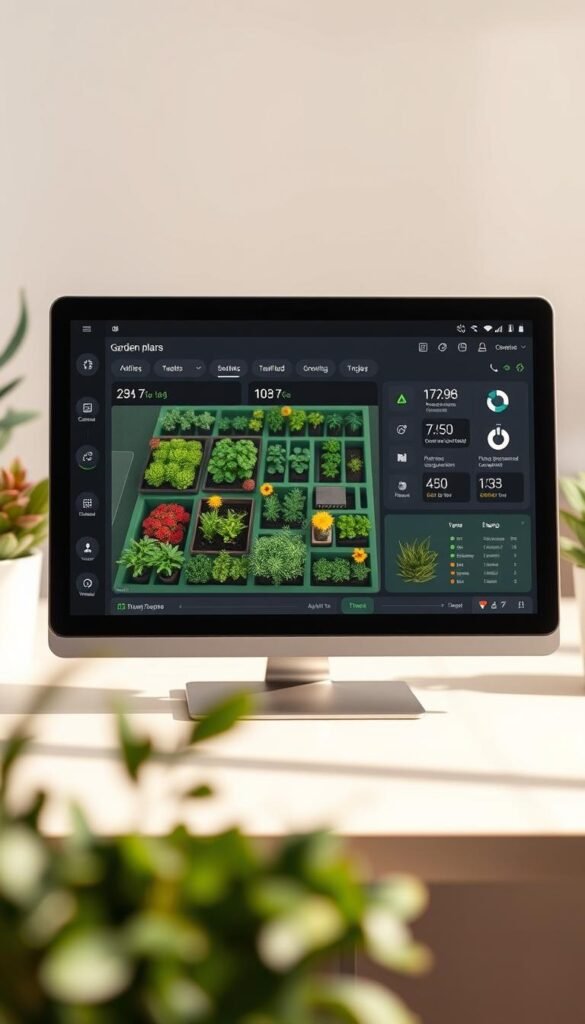Spring planting season often brings excitement—and a touch of chaos. Many growers stare at their plots, unsure how to arrange crops or calculate quantities. While scribbled notes and hand-drawn sketches once ruled, digital solutions now transform guesswork into precision.
Modern growers face unique challenges: optimizing limited space, managing crop rotations, and timing plantings perfectly. Traditional methods struggle to keep up with these demands. That’s where specialized software steps in, blending time-tested growing wisdom with cutting-edge efficiency.
Imagine dragging and dropping plants into a virtual layout that accounts for sunlight patterns and companion species. Many free garden planners offer exactly that, plus soil calculators and harvest reminders. These features turn overwhelming tasks into manageable steps, whether you’re growing heirloom tomatoes or cultivating a pollinator haven.
The best tools do more than organize—they educate. Interactive guides explain plant needs, while 3D previews show how your space evolves through seasons. For both beginners and seasoned experts, this tech eliminates the springtime scramble, replacing it with confidence and clarity.
Understanding the Benefits of Digital Garden Planning
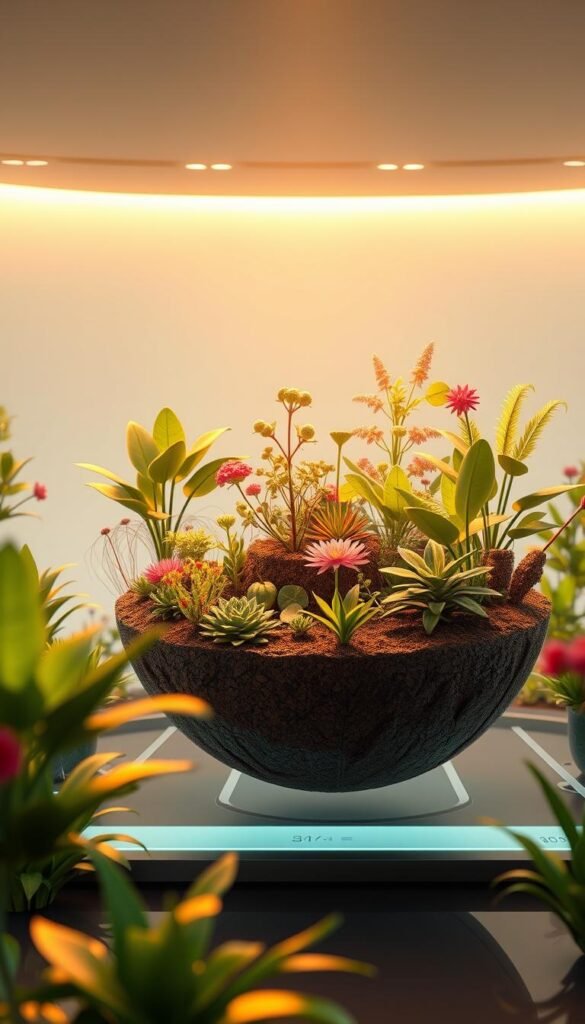
Picture this: your green space thrives without wasted seeds or guesswork. Digital tools merge time-honored growing principles with smart technology, creating harmony between nature and innovation.
Tech Meets Tradition: How Apps Elevate Growing
These platforms don’t replace knowledge—they amplify it. You get instant access to planting guides that adapt to your local frost dates and soil type. One study shows users reduce seed waste by 37% through precise spacing calculators.
Features like native plant databases help protect local ecosystems. Built-in composting guides turn kitchen scraps into garden gold. As seasons change, apps adjust recommendations—like seasonal care reminders for square-foot layouts.
Smart Features for Smarter Growing
Modern planners tackle tasks that once required graph paper and calculators:
| Manual Method | Digital Solution | Time Saved |
|---|---|---|
| Hand-drawn layouts | Drag-and-drop interface | 2.5 hours/week |
| Weather guessing | Live radar integration | 90% accuracy boost |
| Harvest tracking | Auto-generated calendars | Never miss a ripe tomato |
You’ll receive alerts when to water based on real-time rainfall data. Companion planting guides prevent bad neighbor combinations. It’s like having a master gardener in your pocket—without the muddy boots.
Exploring Top Garden Planning Apps and Tools
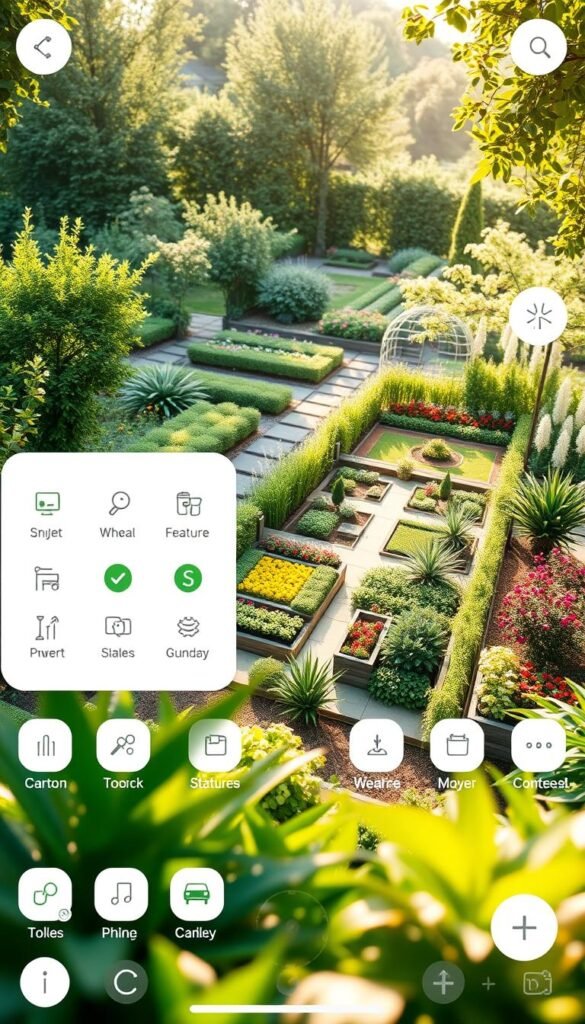
Selecting the right digital assistant can make or break your growing experience. Let’s unpack how leading platforms simplify design while boosting productivity.
User-Friendly Interfaces and Visual Layouts
GrowVeg Garden Planner shines with curved bed tools and drag-and-drop flexibility. Its free trial lets you test features risk-free. Prefer mobile? Veggie Garden Planner ($3.99) offers instant spacing alerts as you arrange plants.
Planter app’s visual builder feels like playing Tetris with vegetables. “The interface practically weeds out design mistakes before they happen,” notes one user review. Compare options:
| App Name | Standout Feature | Free Option | Platform |
|---|---|---|---|
| Garden Manager | Sunlight-based crop selector | Yes | Web |
| Smart Gardener | Family-size meal planning | No | Web |
| Seedtime | ZIP-code specific calendars | 14-day trial | iOS/Android |
How Apps Guide Companion Planting and Crop Management
Smart Gardener auto-pairs plants using companion planting strategies, while Veggie Garden Planner flashes red when bad neighbors touch. These tools prevent rookie mistakes—like planting tomatoes near cabbage.
Seedtime’s calendar syncs planting dates to your local frost patterns. Weekly task lists adapt as seasons change, ensuring your basil never overshadows your peppers. With real-time adjustments, your layout stays productive from first sprout to final harvest.
Garden Planning Apps and Tools: Tech Solutions for the Modern Grower
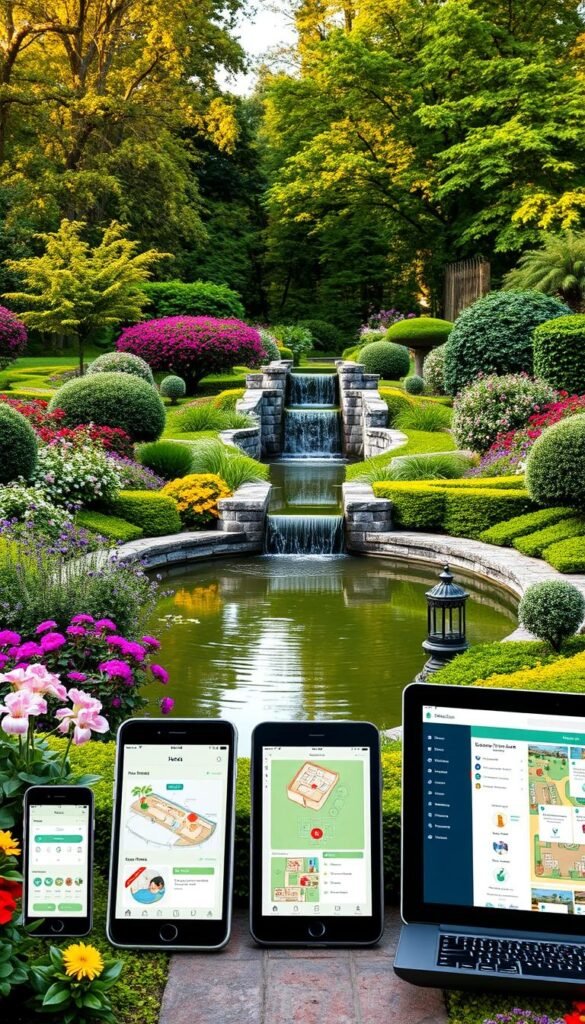
Not all green thumbs need the same tools. Whether you’re sketching raised beds or tracking planting times, today’s options match every style and budget. Let’s dig into platforms that turn vague ideas into thriving layouts.
VegPlotter wins hearts with its $18/year simplicity. Designed for ease, it skips flashy features for clear crop labels and zone-based tips. Drag sunflowers where they’ll thrive, and the app calculates spacing—no tech skills required. One user raves: “It’s like training wheels for my first edible plot.”
Prefer one-time payments? SmallBluePrinter’s $48 tool offers bare-bones garden design with drag-and-drop beds. Though some plants get mislabeled, its 3D previews help visualize growth patterns. Meanwhile, iScape ($29.99/month) brings pro landscaping power to backyards. Upload photos to test rose bush placements or see how maple trees shade your patio in decade two.
| Tool | Price | Best For | Standout Feature |
|---|---|---|---|
| VegPlotter | $18/year | Beginners | Zone-specific crop library |
| SmallBluePrinter | $48 once | DIY designers | 3D layout projections |
| iScape | $29.99/month | Landscaping fans | Photo-based planning |
| PictureThis | Freemium | Plant ID needs | 98% accurate species recognition |
Don’t overlook PictureThis’ magic. Snap a mystery shrub, and it IDs pests plus care needs. Sync findings to your main garden layout app—suddenly, that “weed” becomes a prized perennial. As seasons shift, these tools adapt. Get frost alerts for tomatoes or reminders to divide overcrowded hostas.
The right pick depends on your goals. Tracking crop rotations? VegPlotter’s calendar has you covered. Dreaming of backyard makeovers? iScape’s AR previews prevent costly mistakes. Every click brings your vision closer to reality—one perfectly placed plant at a time.
Integrating Companion Planting and Smart Scheduling
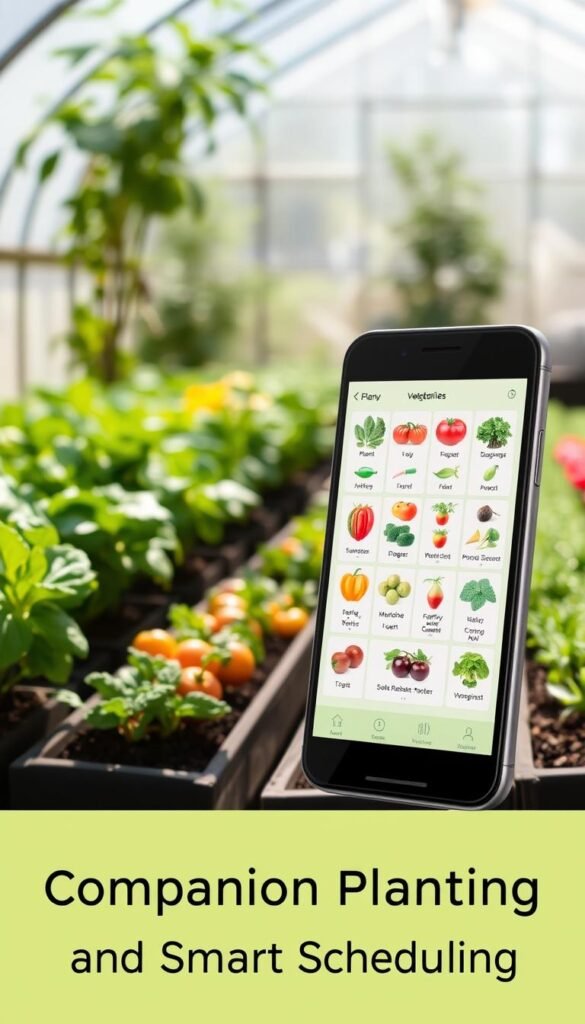
Your phone buzzes—it’s time to water the tomatoes. Modern apps transform age-old growing wisdom into bite-sized alerts, helping you nurture vegetable partnerships that thrive. Let’s explore how digital tools simplify plant relationships while keeping your schedule on track.
Companion Planting Insights for Better Design
GrowVeg’s drag-and-drop interface flashes green when you pair tomatoes with basil—nature’s pest-fighting duo. These companion planting suggestions aren’t random. They’re based on scientific studies showing improved yields and reduced chemical use.
Smart Gardener takes it further, auto-arranging your plot using proven companion strategies. “The app saved my peppers from bad cabbage neighbors,” shares one user. See how top platforms compare:
| App Name | Companion Feature | Scheduling | Platform |
|---|---|---|---|
| Planta | Weather-based alerts | Rain delay warnings | iOS/Android |
| Gardenate | Regional pairings | Frost date reminders | Web |
| Veggie Planner | Real-time feedback | Harvest countdowns | iOS |
Automated Scheduling That Adapts to You
Planta syncs with local weather stations, suggesting you skip watering when storms approach. These smart alerts prevent overwatering while saving up to 30% on your water bill.
Digital journals like From Seed to Spoon track your organic growing journey across seasons. Review last year’s tomato success to refine this season’s plan. Whether you want to grow herbs or heirlooms, automated tools turn guesswork into growth.
Wrapping Up Your Garden Tech Journey
Digital tools aren’t one-size-fits-all – your perfect match depends on what you cultivate. Start by asking: Do you need layout design help or simple care reminders? Beginners love drag-and-drop simplicity for raised beds, while seasoned growers might seek crop rotation features.
Smart Gardener stands out for its seed-specific guidance and companion planting layouts. Test free versions first – most apps offer trials to explore their interface. Sync one tool with your existing routine before adding more complexity.
Remember, technology enhances dirty hands – it doesn’t replace them. Whether nurturing tomatoes or arranging flowers, let apps handle the logistics so you can focus on growth. The right planner becomes your silent partner, turning “I think” into “I know” with every planted seed.

